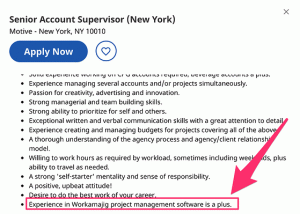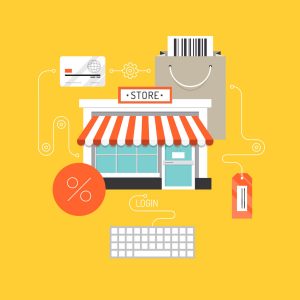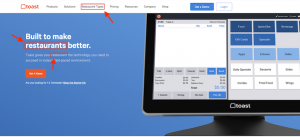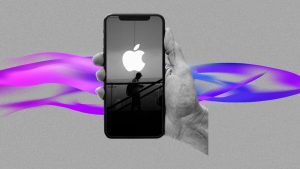The processes companies use to attract and retain customers are most commonly referred to as the buyer’s journey and the customer’s journey.
These two very different efforts are commonly confused with one another. Marketers don’t always understand the difference between the two or which one they need.
Most importantly, as marketers, we all need to understand better how these concepts fit together within a great customer experience.
The Difference Between the Buyer’s Journey and the Customer’s Journey
The significant differences between the buyer’s journey and the customer’s journey are the timing and intended results.
A buyer’s journey is the process a prospect goes through to become a customer, while a customer’s journey is the process of nurturing existing customers to retain their business.
In the sales and marketing machines of modern companies, both are important for very different reasons. And each requires a separate, targeted strategy to make the most of your efforts.
Learn how both can be used (separately and together) to boost your bottom line.
- What is the buyer’s journey?
- What is the customer’s journey?
- Should you use one or use both?
- How do they fit together?
- What’s our approach?
What is the Buyer’s Journey?
The buyer’s journey is a well-known marketing and sales strategy used to convert prospects into customers. The process is broken down into the stages a buyer goes through to make a purchase.
The Three Stages of the Buyer’s Journey
The best way to understand the stages of the buyer’s journey is to think about them in the context of a specific purchase or pain point.
The Awareness Stage
The buyer’s journey begins when the buyer starts to notice a problem or need. Something is happening that needs to be addressed, although they might not know precisely what the problem is yet.
Example: I’m not feeling so great. I wonder if I’m sick.
The Consideration Stage
Now that the buyer has a name for their problem or need, they can research the different solutions available for solving it.
Example: Oh! My symptoms are all pointing to the flu. I’m going to check out the additional testing and treatment options available.
The Decision Stage
The buyer is ready to make a purchase and is busy finalizing the details of their chosen solution.
Example: I’m going to see my primary care doctor for a flu test, and medication since flu medicine is most effective when taken shortly after the onset of symptoms, and the ER, is too expensive and busy.
Why is the buyer’s journey important?
The buyer’s journey’s targeted phases help marketers create the right content to help consumers through the purchasing process since each stage comes with different questions and is best served through very different types of content.
Who is the buyer’s journey for?
No matter what they sell, every business should be using the buyer’s journey as a guide to understanding the process their customers go through and to help them solve their problems by providing information they need to make a decision.
What is the cost of not using one?
Not using some version of the buyer’s journey structure is almost unheard of in modern marketing departments. Without the system of the buyer’s journey, it isn’t easy to know what type of content your buyers need to make a purchasing decision.
That can lead to really ineffective and wasted efforts, ultimately resulting in your competitors being the primary source of education and information for your potential consumers. And that’s never good.
So how does it work?
The Buyer’s Journey: In Content
The buyer’s journey content is a science. Certain content types work best for each stage of the journey, like a wide range of educational blogs exploring a general topic from every angle in the awareness stage to product comparisons and case studies in the decision stage.
Unfortunately, many marketers fall into the trap of focusing too heavily on the awareness stage and far too little on the consideration stage.
The most effective buyer’s journey strategies have consistent, plentiful content created for each stage and the company’s specific buyer personas.
The Buyer’s Journey: In Sales
Sales are the end goal of the buyer’s journey, not the star of the show. However, your sales team should play a significant role in developing buyer personas and subject matter experts to create your content and overall strategic direction.
No one understands what your buyers need to know before making a purchase better than the sales team.
Be sure that your prospects experience a smooth transition from marketing to sales and that the sales process itself is as thoughtful and intuitive as the rest of the buyer’s journey.
After all, it’s the beginning of a longer, even more, lucrative journey.
The Buyer’s Journey: In Marketing
Your marketing team holds the reins of the buyer’s journey, mapping out, creating, and executing the content for each stage. Be sure the foundation of your inbound marketing is solid before building your buyer’s journey out.
That includes understanding your buyer personas, having a good grasp on industry-standard practices, auditing your current content, assessing gaps, and performing enough research to understand the answers buyers need to go from stranger to customer.
The Buyer’s Journey: In Operations
Ensure that the content and each stage of your buyer’s journey is action-oriented and working to its full potential. Every piece of content within your buyer’s journey should have a next step for continued nurturing and/or a conversion opportunity for those ready to move closer toward a purchase decision.
We create content for the buyer’s journey with specific, actionable intentions, not for the sake of just providing the content. Make sure you connect particular actions to all of your buyer’s journey content.
What does success look like?
The details of a successful buyer’s journey strategy will look different for every company, but there will be some fundamental consistencies.
Each phase will have a range of different content types that answer your target buyer personas’ questions without any voids or gaps.
Buyers should be able to frictionlessly flow from one stage into the next, making the process of becoming a customer smooth, simple, satisfying, and easy to navigate.
What is the Customer’s Journey?
Unlike the buyer’s journey, the customer’s journey isn’t intended to make the buyer more educated and aware of problems or needs and potential solutions.
It’s a process of strengthening and deepening their brand loyalty through targeted post-purchase content that delights by entertaining, enriching, and enhancing their experience as a customer of your brand.
When someone makes a purchase, they’re not signing on as your customer for life, just for the moment.
The customer journey’s goal is to make that moment as long as possible, leading to additional purchases and glowing recommendations to everyone they know.
Why is the customer journey important?
If you’re not spending any time or energy on retaining and delighting your current customers, you’re missing a huge potential opportunity for revenue and growth. Your existing customer base has already chosen your brand and likely will again if given a chance.
Please provide them with the option with targeted content and marketing that earns their repeat business and turns them into brand ambassadors.
Who is the customer journey for?
Just like the buyer’s journey, the customer journey strategy is for every business. It doesn’t matter if your focus is business to business, business to consumer, or even business to government.
Every company with a customer base that has the potential for generating repeat or referral business should be using a customer’s journey strategy to maximize the lifetime value of their most important asset– existing customers.
What is the cost of not using one?
According to the Hartford Business Review, the cost of acquiring a new customer is between five and 25 times the cost of retaining existing customers. The potential impact those stats have on your bottom line is game-changing.
The godfather of customer happiness and creator of the Net Promotor Score system, Frederick Reichheld of Bain & Company, touts research that shows increasing your customer retention rate by just five percent increases profits 25% – 95%.
With numbers like that, the real question becomes: how could you afford to not invest in your current customers?
So how does it work?
The Customer Journey: In Content
In the customer journey, content is more important than ever. Not only is the audience way more receptive to listening to your brand than they were before making a purchase, but they’ll also expect more from you than the typical buyer’s journey content.
Send them relevant content designed for pre-purchase audiences.
Use a wide array of content to target existing customers on social media, in person, via email, and beyond.
Make them laugh, make them think, help them use your product and service better, educate them, enrich their lives, and inspire them with your brand’s values and actions.
However, you choose to establish loyalty, motivate word-of-mouth marketing using the customer journey, fuel your efforts with authentic, valuable, and unique content created specifically for your customer personas.
Examples:
- Newsletters
- Product tips
- Tweets
- Merchandise
- Surveys
- Giveaways
- Appearances
- Sponsorships
The Customer Journey: In Sales
If you can trace a direct line from new sales to existing customers, reward them for it! Significant loyalty or promotion programs can go a long way to keep customers engaged, purchasing, or actively recruiting on your behalf.
Don’t forget to solicit feedback from your current customers as you workshop new products or services that may be relevant to them in the future.
And when a repeat purchase comes along, be sure to differentiate existing customers from new ones.
These are old friends and should be treated better than someone whose email you don’t have.
The Customer Journey: In Marketing
Connect and communicate where your customers are, on social media, through email, and at in-person events. Just remember you have a very different goal than you would with buyers. Think of your brand as more of a friend than a business.
A friend wanting to engage with and enrich the lives of your customers rather than sell to them.
The Customer Journey: In Operations
Even content for existing customers shouldn’t be created just to be sent off into the void, hoping it impacts. Strategic, actionable steps should be built into everything you make, even for the customer’s journey.
It won’t look like the textbook conversion path from the buyer’s journey, but you should still map out logical actions that lead your customers further down the rabbit hole with relevance.
What does success look like?
Your customer’s journey strategy should begin by engaging customers as they make their initial purchase and continue to do so consistently, with the right types of content, on the right platforms, for your specific customer personas.
Aim for regular purchases, high net promoter scores, a steady increase in business from referrals, and brand loyalty longevity.
Successful customer journey efforts will be even more evident in your bank account than a successful buyer’s journey strategy.
Should you use one or both?
Businesses should leverage both the buyer’s journey and the customer journey in their content, sales, marketing, and operations strategies. For start-ups and those primarily focused on building their customer base, the buyer’s journey should be the main focus.
Once you’ve got a solid base of customers you want to retain, shift some of that attention to the customer’s journey to maximize your loyal fans’ lifetime value and turn them into avid promoters of your brand.
How do they fit together?
The customer experience encompasses the entirety of your strategy for potential, new, and existing customers. It begins with the buyer’s journey meeting the customer wherever they are in the buying process and giving them all the information they need to convert into customers frictionlessly.
It ends when you deliver on your promise.
Think of the customer journey as beginning then, at the end of the buyer’s journey. As the buyer converts to a customer, your marketing and sales efforts shouldn’t stop; they should shift.
Within the customer journey, there should also be ongoing opportunities that help the customer identify additional pain points or needs. Doing so would begin the buyer’s journey again, within the scope of a different product or service than their initial purchase.
Business & Finance Articles on Business 2 Community(15)



